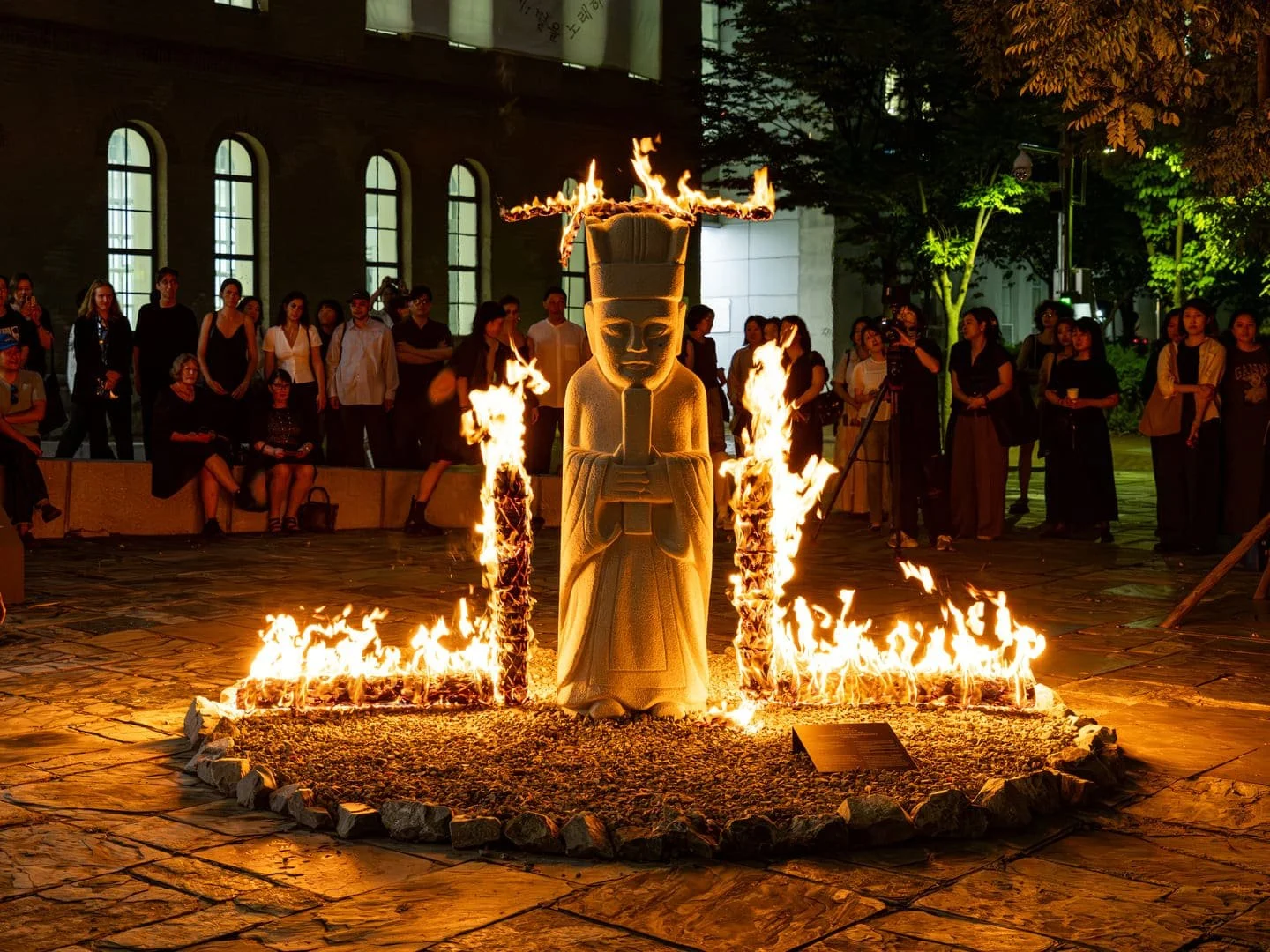By The Korea Times
Copyright scmp

This year’s Seoul Mediacity Biennale unfolds as a vast seance – a ritual where the living seek to commune with spirits.
If its title, “Séance: Technology of Spirit”, is not a dead giveaway, the clues lie elsewhere. Nearly a third of the artists on view are themselves deceased. Many, in their lifetimes, sought to speak with the other side through their practice: Hilma af Klint, Georgiana Houghton, Onisaburo Deguchi, Emma Kunz and even Nam June Paik.
Yet ultimately, the seance here is more than an invocation of the dead. It stands as a metaphor for summoning back all the “dead” stories and presences long purged by Western modern rationalism – the supernatural, the mystical, the ancestral, the subconscious and the transcendent.
“The advent of modernity imposed this widening chasm between science and spiritual practice. This was true in East Asia, as well as in other parts of the world,” said Hallie Ayres, one of a trio of curators alongside Anton Vidokle and Lukas Brasiskis, at the Seoul Museum of Art (SeMA), the biennale’s primary venue.
Brasiskis added: “This modernity was imposed by colonial powers, but in certain ways, spiritual practices never stopped existing; they were suppressed or pushed underground.”
To revisit the philosophies and technologies that endured outside the Western colonial framework is to glimpse their disruptive, emancipatory potential – a force that has inspired artists to pursue visions that are feminist, ecological and anti-capitalist.
The biennale opens with a punchy image overhead: Johanna Hedva’s monumental textile prints of a demonic avenger, entwined with snakes and bearing a severed head in her hand. The illustration is drawn from an 18th-century grimoire, Compendium of Demonology and Magic, whose title page offers a sinister warning to the uninitiated: “Noli me tangere” (Do not touch me).
From there, visitors pass through a long, dark fabric tunnel and emerge into a gallery of early abstractions that resist the standard narrative. Modern art’s turn to abstraction has often been framed as a declaration of creative independence from external influences – art purely made for its own sake.
The exhibition has plenty more to offer as it delves deeper into themes of transcendence and healing.
Some dwell on states of trance, reminding us that the boundaries of consciousness and reason are far more porous than we are taught to believe, as in Joachim Koester’s video Tarantism.
Others turn to humanity’s violent impulses – our exploitation of other species and our mindless destruction of the very environment that keeps us alive. Yin-Ju Chen’s Extrastellar Evaluations, for instance, views such threads of darker human history through the lens of an alien intelligence and characterises them as a gross “misalignment” with the cosmic order.
The final chapter of the show reaches into a decolonial reckoning, indicating the destruction of indigenous traditions under Western imperialism. It reminds us that the dead – and the histories they carried – do not vanish with their bodies, but persist, haunting and shaping the worlds we inhabit today.
In Korea, memories of political scandals involving presidents entangled with religious charlatans or dubious shamanistic rites have left some wary of the mystical when it appears in publicly funded exhibitions like the Seoul Mediacity Biennale.
But the curators insist such history does not need to close doors for meaningful exploration.
“Any kind of technology can be used to heal or to damage. Spiritual practices are not an exception,” said curator Vidokle.
“As much as they can carry emancipatory potential, or healing potential, we also know religion has been misused in a very damaging way. Our approach is not an endorsement of any particular practice, but an inquiry into their plurality.”
Ayres added: “The exhibition also proposes to weaken the tether between spiritual practices and new obscurantism, where these practices are used towards the goals of resurgent nationalism or bolstering state projects for violent ends.”
The Seoul Mediacity Biennale runs until November 23.
Read the full story at The Korea Times